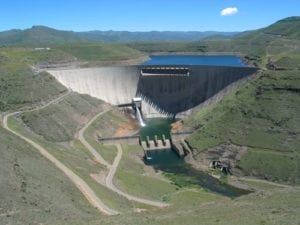Public Private Partnerships (PPPs) at local, provincial and national government level could help to drive water infrastructure forward, according to construction and technology law firm MDA Attorneys.
“With maintenance backlogs causing problems and a widening gap between water supply and demand, we need a new approach that brings together the private and public sectors,” says Ian Massey, a consultant to MDA. “It has been a bleak time for the construction sector, but PPPs provide opportunities to bring private sector expertise and urgency to deliver much needed water infrastructure while ensuring sustainability for public institutions. “We need to explore scenarios like desalination to take advantage of our long coastline and more deeply engage on the second phase on the Lesotho Highlands Water Project. Only a small percentage of waste water is recycled in South Africa, so increasing the use of treated waste water in agriculture and forestry will play a key role in relieving water stress,” he says.Unpacking the options
Massey was speaking at a Collective Wisdom lecture hosted by MDA Attorneys, where some of these options were unpacked by experts, including Tente Tente, Divisional Manager for Phase II of the Lesotho Highlands Development Authority. Tente explained that the existing 72MW Muela hydropower station was built under Phase I of the project. Phase II is expected to ensure a reliable water supply to South Africa by 2026 that will meet the demands of the Gauteng region as well as increase the hydropower generation capacity of the scheme. The feasibility study recommended the construction of the Polihali Dam and transfer tunnel as part of Water Transfer component of Phase II. “There are a number of PPP opportunities in Phase II as we are looking at water transfer and hydropower components of the schemes being implemented at the same time. The project is located in a remote area, so we need to create modern infrastructure.We have an advanced infrastructure programme which includes housing in the form of a construction village; access via a network of roads and bridges for foot and vehicle traffic; the relocation of a number of existing houses and public infrastructure; and the provision of telecoms and bulk power supply to fire up the tunnel boring machines. Contracts will involve the two main works: the dam itself and the tunnel.”








